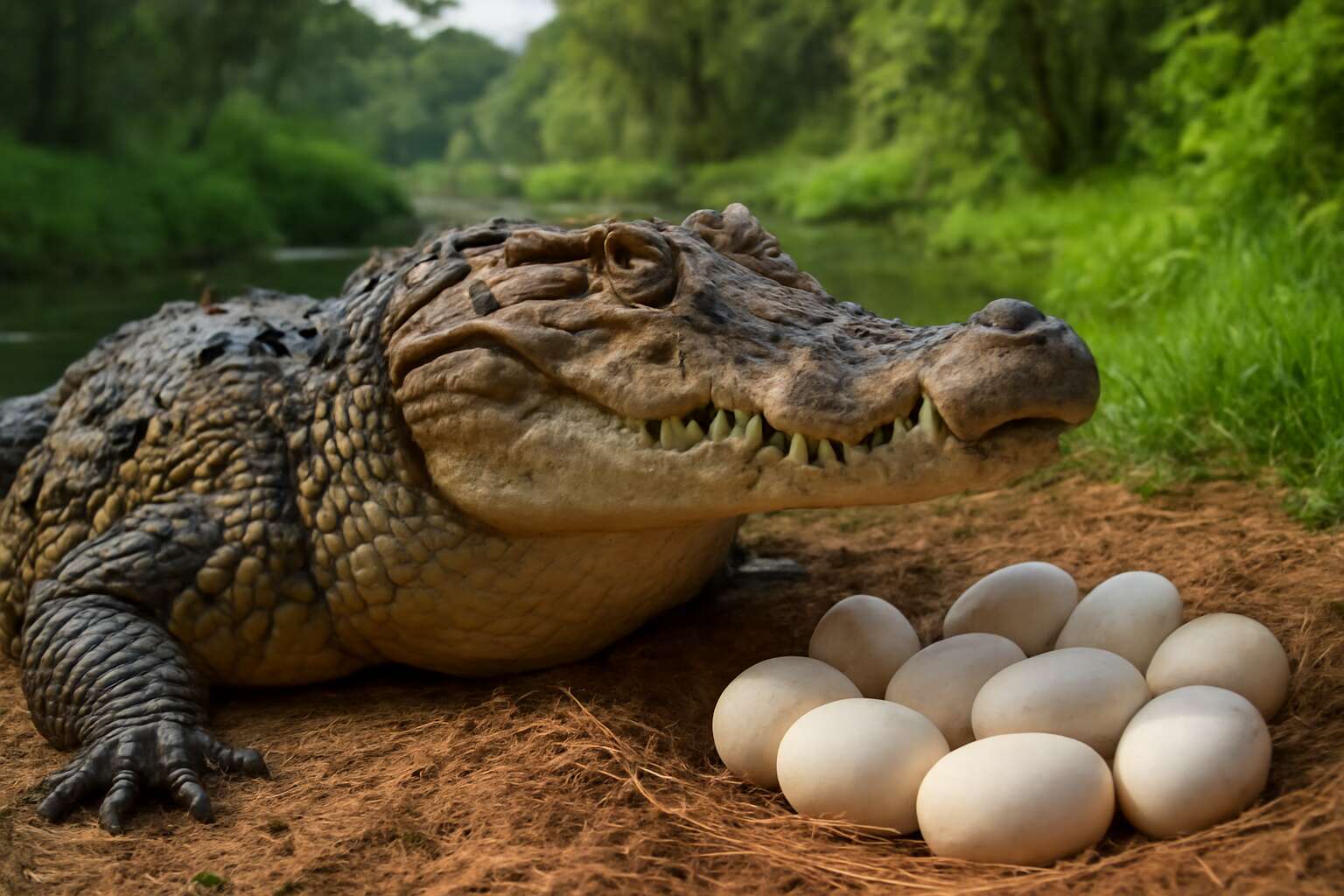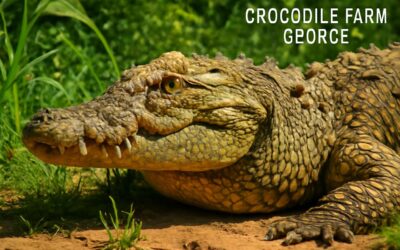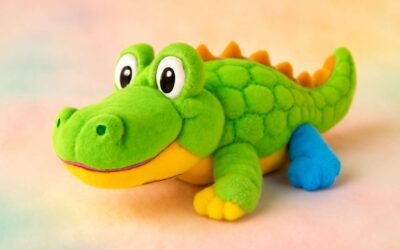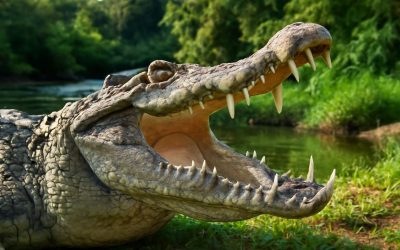Understanding Crocodile Reproduction
Overview of Crocodile Species – Introduction to various crocodile species worldwide
Across the diverse tapestry of South Africa’s wetlands and river systems, crocodiles have long captured the imagination of locals and conservationists alike. Their remarkable presence prompts a fundamental question: is the crocodile oviparous or viviparous? Understanding their reproductive methods unveils the intricate balance of nature that sustains these ancient predators. Unlike many reptiles, crocodiles are oviparous, meaning they lay eggs rather than giving birth to live young. This trait connects them to a lineage of egg-laying creatures that have thrived for millions of years.
Within the broad family of crocodile species worldwide, there exists notable variation. From the formidable Nile crocodile in Africa to the saltwater crocodile of Australia, each species showcases unique adaptations. Here are some of the most well-known crocodile species:
- Nile crocodile (Crocodylus niloticus)
- Saltwater crocodile (Crocodylus porosus)
- American crocodile (Crocodylus acutus)
- West African slender-snouted crocodile (Mecistops cataphractus)
These species, though geographically distant, share the fundamental trait of oviparity, laying eggs in carefully chosen nesting sites. The reproductive strategies of crocodiles reveal a captivating blend of ancient instinct and environmental adaptation, making the question of whether a crocodile is oviparous or viviparous all the more compelling to explore further.
Reproductive Biology of Crocodiles – General reproductive mechanisms and behaviors
The reproductive biology of crocodiles remains one of nature’s most captivating mysteries, intertwined with ancient instincts honed over millions of years. Unlike mammals, crocodiles are oviparous, meaning they lay eggs rather than giving birth to live young. This characteristic links them to a lineage of egg-laying creatures that have persisted through epochs of environmental upheaval. Their reproductive cycle is finely tuned to seasonal cues, ensuring the survival of their offspring amid the shifting landscapes of South Africa’s wetlands and river systems.
During the nesting season, female crocodiles exhibit remarkable behaviors—carefully selecting nesting sites, often in sandy banks or sheltered riverbanks, where their eggs will be safely incubated. The number of eggs laid can vary significantly among species, but typically ranges from 10 to over 50. After laying, the female diligently guards her nest, a vital strategy to protect against predators and environmental threats. The question of whether a crocodile is oviparous or viviparous is central to understanding their survival tactics; in this case, crocodiles are definitively oviparous, relying on eggs to perpetuate their ancient lineage.
- The female excavates a nest site, often using her powerful tail and limbs.
- She then deposits her eggs, carefully covering them with vegetation or sand to regulate temperature.
- Incubation lasts approximately 60 to 100 days, depending on environmental conditions.
This intricate reproductive process underscores the delicate balance maintained by crocodiles within their ecosystems. As they nurture their eggs through incubation, these resilient reptiles demonstrate a fascinating blend of instinct and environmental adaptation, making their oviparous nature a fundamental aspect of their survival story in South Africa and beyond.
Oviparous Nature of Crocodiles
Definition of Oviparity – What does oviparous mean?
When it comes to understanding the fascinating reproductive nature of crocodiles, one fact remains clear: the crocodile is oviparous. This means that, unlike mammals that give birth to live young, crocodiles lay eggs. Oviparity, in the simplest terms, refers to animals that produce eggs outside their bodies, which then develop and hatch externally. For crocodiles, this process is both a marvel of nature and a vital aspect of their survival. These ancient reptiles carefully select nesting sites—often sandy banks or riverbanks—where their eggs are incubated in the warmth of the sun.
It’s intriguing to note that the reproductive strategy of the crocodile is finely tuned to its environment. The female typically guards her nest diligently, ensuring the eggs remain protected from predators and harsh weather conditions. This oviparous nature is a testament to their evolutionary success, allowing them to thrive in diverse habitats across Africa and beyond. Whether people are curious about the crocodile’s oviparous or viviparous nature, the answer leans clearly toward oviparity, showcasing the remarkable ways these creatures continue to adapt and endure.
Evidence Supporting Crocodiles as Oviparous – Scientific studies and observations
Scientific investigations and meticulous observations have long affirmed that the crocodile is oviparous. Through detailed studies of their reproductive behaviors, researchers have documented the nesting habits of these formidable reptiles, revealing an unmistakable reliance on external egg development. In particular, the discovery of crocodile nests—constructed with precision and care—serves as a vivid testament to their oviparous nature.
Evidence supporting crocodiles as oviparous includes the presence of well-defined eggs and the incubation process that unfolds outside their bodies. Notably, in South Africa, researchers have observed female crocodiles diligently guarding their nests, often for weeks, in warm, sandy environments. This behavior underscores the importance of external incubation for successful reproduction, firmly positioning the crocodile as oviparous rather than viviparous. Such findings dispel any ambiguity surrounding whether the crocodile is oviparous or viviparous, confirming its place among egg-laying reptiles.
Crocodile Egg Laying Habits – Locations, nesting behaviors, and incubation period
The true marvel of crocodile reproduction lies in their unwavering commitment to the oviparous path. South Africa, with its lush wetlands and sprawling river systems, offers a perfect stage for this ancient ritual. Crocodiles, like seasoned architects of nature, meticulously select nesting sites—often sandy banks or sheltered areas close to water—where they laboriously construct nests that resemble primitive art forms. These nests serve as the cradle for their eggs, which are laid with a sense of purpose and precision.
Following egg deposition, the incubation period typically spans around 80 to 90 days, during which the female guards her nest with a vigilance that borders on obsession. She often remains nearby, sometimes for weeks, fending off predators and ensuring optimal warmth. This external incubation process is a hallmark of the crocodile is oviparous or viviparous query, firmly establishing the species’ status as egg-layers. Such behaviors vividly illustrate that crocodiles depend on external development, dispelling any ambiguity about their reproductive classification.
For those intrigued by the reproductive intricacies of these formidable creatures, understanding their nesting habits reveals a captivating blend of instinct and adaptation. Whether it’s the choice of nesting location or the diligent guarding post-laying, every detail underscores the crocodile’s oviparous nature—an enduring testament to their ancient lineage and survival acumen.
Crocodile Hatchlings – Development stages and parental care
Once crocodile hatchlings emerge from their eggs, a new chapter in their survival story begins—an intricate dance of development and parental care that underscores their oviparous nature. These tiny predators undergo remarkable transformations within the safety of their shells, with embryonic stages marked by rapid growth and differentiation. From a fragile embryo to a fully formed hatchling, each stage is carefully monitored by the female, who remains vigilant even after laying her eggs.
During the early days of life, hatchlings are incredibly vulnerable, relying heavily on maternal protection. In regions like South Africa, where crocodiles are an integral part of wetland ecosystems, this parental involvement is vital for their survival. The mother often guards her nest fiercely, sometimes for weeks, ensuring predators stay at bay and the hatchlings can safely make their first movements into the water. This behavior vividly affirms that the crocodile is oviparous, showcasing external development and parental investment. Such life cycles reveal the complex yet fascinating reproductive strategy that has enabled crocodiles to endure for millions of years.
Viviparity in Crocodiles: Is It Possible?
Understanding Viviparity – Definition and comparison with oviparity
While the majestic crocodile often evokes images of ancient reptiles patiently basking in the sun, questions about its reproductive mysteries continue to fascinate scientists and enthusiasts alike. Could these formidable creatures be viviparous, giving birth to live young, or are they firmly rooted in the traditional oviparous classification? When we explore the concept of viviparity—where embryos develop inside the mother—it’s tempting to speculate about alternative reproductive strategies. However, evidence overwhelmingly supports that crocodiles are oviparous, laying eggs that hatch after incubation. This method allows for a fascinating balance of parental investment and environmental adaptation. Yet, the possibility of viviparity in crocodiles remains a tantalizing scientific inquiry, stirring debates and sparking curiosity among herpetologists. The question, “is the crocodile oviparous or viviparous?” continues to inspire research, revealing just how much there is to learn from these ancient, enigmatic reptiles.
Research and Scientific Findings – Any evidence of viviparous crocodile species
Scientific research has yet to find conclusive evidence that crocodiles are viviparous. Despite ongoing curiosity, all current data strongly support that crocodiles are oviparous. They lay eggs in nests, which incubate in warm environments until hatchlings emerge. This reproductive strategy aligns perfectly with their ecological needs and evolutionary history.
However, some scientists have speculated about the potential for viviparity in crocodiles, given their adaptable nature. A few rare cases in other reptiles have shown facultative viviparity, but no solid proof exists that crocodiles have adopted this method. Studies continue to examine embryonic development within the mother, but so far, the evidence remains unconvincing.
- Eggs are laid in carefully chosen nesting sites, often with protective coverings.
- Incubation periods vary but typically last around 80-90 days.
- Hatchlings are fully independent, with parental care being minimal or absent.
While the possibility of a viviparous crocodile keeps the scientific community intrigued, current scientific findings support that the crocodile is oviparous. The evolutionary advantages of egg-laying continue to make oviparity the dominant reproductive mode among crocodilians.
Biological Constraints and Adaptations – Why crocodiles are unlikely to be viviparous
Despite the allure of evolutionary surprises, the notion that the crocodile could be viviparous remains an intriguing yet improbable hypothesis. The biological constraints inherent in their physiology seem to firmly anchor crocodiles as oviparous creatures. Their reproductive anatomy and embryonic development processes are intricately designed around egg-laying, not live birth. The complexity of internal gestation in reptiles like crocodiles would require a radical transformation of their structural biology, which current evidence does not support.
While the adaptable nature of crocodiles fuels speculation, the evolutionary advantages of oviparity—such as nest construction and environmental incubation—continue to dominate their reproductive strategy. The nesting behaviors, like choosing specific sites with protective cover, and the relatively lengthy incubation period of around 80-90 days, underscore their commitment to egg-based reproduction. Notably, the development stages of hatchlings and minimal parental care align seamlessly with an oviparous lifestyle, further reinforcing this mode of reproduction.
- Physiological constraints prevent internal gestation in crocodiles.
- Evolutionary history favors egg-laying as a reproductive strategy.
- Environmental adaptations support nest building and incubation in warm habitats.
Ultimately, the scientific community remains steadfast in their conclusion: the crocodile is oviparous. The idea of viviparity in crocodiles, while captivating, is hindered by fundamental biological and ecological realities that have persisted through millions of years of evolutionary refinement.
Comparison Between Oviparous and Viviparous Reptiles
Reproductive Strategies – Differences and similarities
The fascinating world of reptilian reproduction reveals a tapestry of strategies, each as intricate as the creatures themselves. When pondering whether the crocodile is oviparous or viviparous, one quickly encounters a compelling divergence rooted deep in evolutionary history. Oviparous reptiles, like crocodiles, lay eggs that develop externally, offering a glimpse into a primordial dance of incubation and nurturing. In contrast, viviparous species give birth to live young, a trait often associated with more advanced or specialized adaptations.
Despite the allure of viviparity, scientific evidence consistently supports the notion that crocodiles are oviparous. Their eggs, often hidden in carefully constructed nests, incubate outside the mother’s body, showcasing a reproductive strategy finely tuned to their aquatic environments. This external reproductive mode not only influences their nesting behaviors but also underscores their resilience in diverse habitats across South Africa. The question of whether the crocodile is oviparous or viviparous continues to ignite curiosity, yet the ancient lineage firmly roots it in the oviparous tradition—an enduring testament to evolutionary persistence.
Evolutionary Perspectives – Why some reptiles are oviparous or viviparous
Evolution has crafted a fascinating spectrum of reproductive strategies among reptiles, with some sticking to ancient traditions and others embracing new adaptations. When considering whether the crocodile is oviparous or viviparous, it’s like uncovering a chapter from a prehistoric manual—one that leans heavily toward the old-school egg-laying method. But why did some reptiles evolve to carry their offspring inside, while others chose to lay eggs and step back? The answer lies deep in evolutionary history.
Oviparity, the act of laying eggs externally, offers a tantalizing glimpse into the reptilian past, where the environment rather than the mother’s body provides the incubation chamber. Conversely, viviparity—giving birth to live young—often signals a more advanced or highly specialized adaptation, sometimes driven by climate or habitat pressures. Interestingly, the reptile world hosts both strategies, but crocodiles have steadfastly stuck with their oviparous roots. This choice reflects their biological constraints and the ecological niches they occupy.
While some might think living in aquatic environments might favor viviparity, crocodiles have thrived as oviparous creatures for millions of years. Their nests, often constructed from mud and vegetation, serve as external incubators. This reproductive tactic isn’t just a matter of tradition; it’s a finely tuned evolutionary strategy that maximizes survival in their South African habitats. The crocodile is oviparous or viviparous? Well, in their case, it’s a resounding oviparous—proof that sometimes, old-school is just the best school.
Implications for Crocodile Conservation – How reproduction affects population sustainability
The reproductive strategies of reptiles are as diverse as the landscapes they inhabit, shaping the survival and sustainability of their populations. When pondering whether the crocodile is oviparous or viviparous, it’s essential to understand how these strategies influence long-term conservation efforts. Oviparous reptiles, like crocodiles, lay eggs that develop externally, offering a fascinating window into ancient evolutionary pathways. This method requires specific nesting behaviors and environmental conditions, which directly impact population resilience.
On the other hand, viviparous reptiles give birth to live young, often a response to habitat pressures or climate extremes. For crocodiles, their oviparous nature means their population sustainability hinges on healthy nesting sites and environmental stability. Disturbances to their nesting grounds—be it from habitat destruction or pollution—can threaten their reproductive success. Therefore, understanding whether the crocodile is oviparous or viviparous isn’t merely academic; it’s fundamental to their conservation in South Africa and beyond.
- Protection of nesting sites
- Mitigation of habitat destruction
- Maintaining environmental conditions conducive to egg incubation
Since crocodiles rely on external incubation, their reproductive success is intricately tied to environmental health. Preserving these external reproductive habitats ensures that these majestic creatures continue to thrive, underscoring the vital link between reproductive biology and population sustainability. The answer to whether the crocodile is oviparous or viviparous is clear—it’s a steadfast oviparous, a testament to their ancient lineage and ecological resilience.
FAQs About Crocodile Reproduction
Are Crocodiles Always Oviparous? – Clarification and common misconceptions
The question of whether the crocodile is oviparous or viviparous has long haunted herpetologists and nature enthusiasts alike. With their ancient, almost primal presence, crocodiles have often been shrouded in mystery—so it’s no surprise that misconceptions linger. Contrary to some beliefs, crocodiles are unequivocally oviparous, laying eggs in carefully chosen nesting sites that echo their primordial heritage. This reproductive strategy is a testament to their resilience and adaptation, allowing them to thrive in diverse environments across South Africa and beyond.
While the notion of viviparity might seem tempting—after all, many creatures have evolved such strategies—scientific evidence overwhelmingly supports the fact that crocodiles do not give birth to live young. Instead, their eggs incubate externally, protected by a tough shell that safeguards the developing hatchlings. In the dark, fertile shadows of their nesting grounds, crocodile eggs serve as cryptic vessels of life, waiting patiently for the moment of emergence. So, in the grand tapestry of reptilian reproduction, the crocodile’s oviparous nature remains an enduring symbol of their ancient resilience and relentless survival.
Can Crocodiles Transition Between Reproductive Modes? – Biological plausibility
In the labyrinthine world of reptilian reproduction, the question of whether the crocodile is oviparous or viviparous remains one of the most compelling puzzles. While evolution has bestowed many creatures with the ability to adapt their reproductive strategies—sometimes even within a single lineage—the crocodile’s reproductive mode appears remarkably steadfast. Scientific scrutiny and extensive field observations affirm that crocodiles are unequivocally oviparous, a trait that has persisted for millions of years. This means they lay eggs, often in meticulously selected nesting sites, where the external incubation process unfolds in silent anticipation of new life.
Despite some speculative theories suggesting the potential for viviparity in crocodilians, current evidence does not support this hypothesis. The biological constraints rooted in their ancient physiology make the transition from egg-laying to live birth exceedingly unlikely. Instead, their reproductive strategy highlights a fascinating ecological balance—something that underscores their resilience in diverse habitats across South Africa and beyond. For those captivated by the evolutionary tapestry of reptiles, understanding why the crocodile is oviparous or viviparous reveals much about their survival in the face of environmental upheaval.
Additional Facts About Crocodile Reproductive Behavior – Interesting trivia and facts
In the enchanting realm of reptilian reproduction, few questions stir as much curiosity as whether the crocodile is oviparous or viviparous. Fascinatingly, scientific consensus firmly establishes that crocodiles are unequivocally oviparous. This means they lay eggs, often hidden away in carefully chosen nesting sites, where silent incubation begins—a ritual unchanged for millions of years. Their eggs are marvels of nature, meticulously crafted to endure the elements until hatchlings emerge into the world with a mix of primal instinct and parental care.
While some speculative theories whisper about the possibility of viviparity—giving birth to live young—current scientific evidence dismisses this idea. The ancient physiology of crocodiles, with their specialized reproductive organs and external egg incubation, renders the transition to viviparity biologically implausible. This steadfast reproductive strategy not only underscores their resilience but also shapes their ecological niche, allowing them to thrive across diverse habitats, including the lush wetlands and river systems of South Africa.
Interestingly, crocodile hatchlings show remarkable independence from birth, yet maternal instincts often lead mothers to guard their nests fiercely. This delicate balance between external incubation and parental vigilance highlights the complexity of their reproductive behavior.
- Did you know that crocodile eggs can take up to three months to hatch?
Such facts reveal the intricate nature of their reproductive cycle, rooted deeply in evolutionary history and ecological adaptability.
Summary of Key Points
Main Conclusion – Crocodiles are oviparous
Understanding how crocodiles reproduce is essential to appreciating their resilience and evolutionary success. The key takeaway is that crocodiles are oviparous, meaning they lay eggs rather than giving birth to live young. This reproductive strategy has persisted for millions of years, adapting to diverse environments across Africa, including South Africa. The process involves females selecting nesting sites, often along riverbanks or in wetlands, where they carefully deposit their eggs and guard them fiercely during incubation.
This oviparous nature distinguishes crocodiles from some other reptiles, which may be viviparous—bearing live young. Scientific evidence overwhelmingly supports the idea that crocodile is oviparous or viviparous in some reptiles, but crocodiles specifically fall into the oviparous category. Their eggs develop outside the mother’s body, relying on environmental conditions to ensure successful hatching. This reproductive strategy underscores the importance of nesting habitat conservation, vital for sustaining crocodile populations in South Africa and beyond.
Why This Matters – Impact on ecosystem and conservation efforts
The reproductive nature of crocodiles has profound implications for both their survival and the ecosystems they inhabit. Recognizing that the crocodile is oviparous or viviparous isn’t mere trivia; it’s a crucial piece of the conservation puzzle. Since crocodiles lay eggs, their population health hinges on the availability of undisturbed nesting sites—particularly along South Africa’s riverbanks and wetlands. Protecting these habitats ensures that the delicate process of incubation continues unthreatened, safeguarding future generations of these ancient predators.
Furthermore, understanding their oviparous nature emphasizes the importance of environmental stability. Crocodile eggs are vulnerable to habitat destruction, climate change, and human interference—factors that can rapidly diminish their numbers. For conservation efforts to succeed, it is vital to maintain the ecological balance that allows crocodiles to reproduce naturally. After all, whether a crocodile is oviparous or viviparous, the resilience of their populations depends on our commitment to preserving the environments that support their unique reproductive strategies.




0 Comments